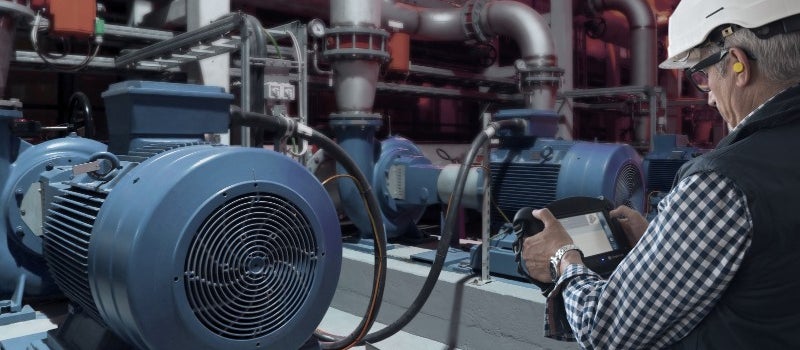Deep learning
This technology includes all the learning techniques (machine learning) and in particular, deep learning. Deep learning builds upon the artificial neuron technology conceived at the end of the 1950’s, as well as on the tremendous computational power we have today to equip computers with a ‘virtual brain’ made of thousands or even millions of neurons capable of learning.
It is this deep learning technique which Acoem uses today within the artificial intelligence engine AccurexTM to develop automatic diagnostic capabilities of vibration monitoring solutions. It is also used within the development of a tool capable of detecting abnormal evolutions in complex machines.
Artificial intelligence, when applied to vibration analysis, is useful not only for non-specialists users but for experts as well. First, it helps avoid analyzing signals from healthy machines or from those whose defects are obvious. Experts can thus monitor a larger group of machines and devote more time to more complex cases to limit the risk of error in the analysis. Secondly, it provides a reliable and easily understandable diagnosis allowing non-specialists to be autonomous in their decision making, and here again experts will save time as they are not asked for help at all times.
However, how do you teach a computer to formulate a reliable vibration diagnosis? Therein lies the point of a relevant artificial intelligence module. The answer is simple: provide good teachers.

At Acoem , the teachers are our very own experts.
They are the ones who select the data that serve as a basis for reflection in AccurexTM (input data). It is their diagnosis which serves as the result to be achieved (output), and it is their method of analysis which we strive to reproduce (process).
By putting all our expertise into this supervised learning process where the machine, using human diagnosis as reference, works through the representative data of the problem to be identified, we are improving the mathematical model, algorithms and learning strategy of AccurexTM more effectively.
Thanks to its teachers, AccurexTM is now perfectly trained in the basics of vibration analysis, having mastered all the explicit regulations. All that remains to do is to have it acquire a sense of intuition which is what leads a seasoned expert to formulate an exact diagnosis from just a couples of symptoms but without indisputable proof. That is what we are attempting to achieve now.
However, we don’t intend to stop there. We are already working on an unsupervised learning process in which the vibration analysis tool will learn to explore and understand data itself before grouping it into subsets of similar elements. With unsupervised learning, the tool could go as far as to signal a change of behavior in a machine while explaining to us where this change comes from. It could even enhance the expertise of our experts by allowing them to discover evidence within data which still remains invisible to the naked eye.
With artificial intelligence, we are entering into a true virtuous cycle of vibration analysis which will benefit mankind. And the adventure is only just beginning!








